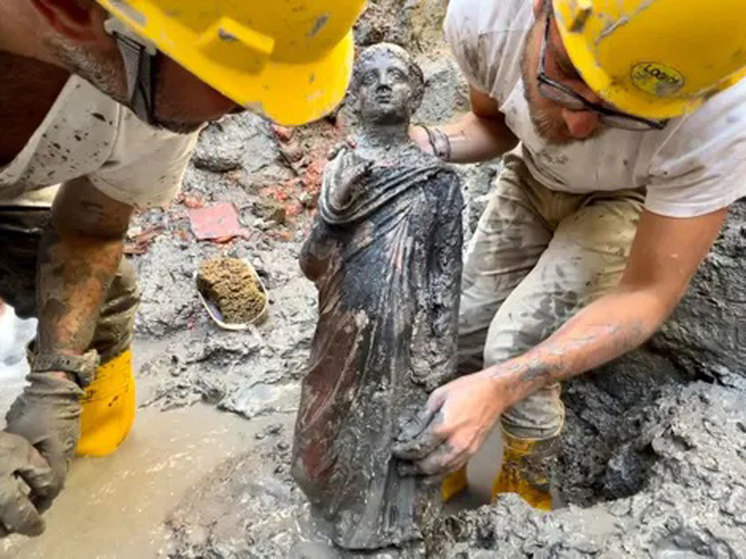More than twenty bronzes found in Tuscany
A rare find of 24 antique bronzes made in Tuscany is on display in Rome. Antique statues were discovered last year in a place that was a place of worship for both the Etruscans and the ancient Romans.
 Photo: Jacopo Tabolli/Universita per Stranieri di Siena
Photo: Jacopo Tabolli/Universita per Stranieri di Siena
A collection of bronze statues buried under mud and boiling water for thousands of years before being found in the ruins of a network of ancient thermal springs in a small town in Tuscany will be put on public display in Rome.
According to The Guardian, The 24 bronze statuettes, mostly dedicated to gods, are the largest find of their kind in Italy and were unearthed last year in the ancient springs of San Casciano dei Bagni, in what used to be a place of worship used by both Etruscans and Romans .
The statues, which experts believe were commissioned by wealthy families living in the area, include a sleeping Hygeia, the goddess of health, with a snake coiled around her arm, and one dedicated to Apollo, god of the sun and light.
These sculptures once adorned the sides of oval bathtubs before being immersed in water during a spiritual ceremony believed to have taken place in the first century AD.
An exhibition called Gli Dei Ritornano («The Gods Return» ) at the Quirinal Palace will last until July 25, and then resume from September 2 to October 29, 2023.
The relics will eventually be displayed in a museum under construction in San Casciano dei Bagni, a hilltop town near Siena.
Finds from ancient springs believed to have been used by the Etruscans in the second century BC, included 6,000 coins, as well as many figurines of sacred significance. These include small figurines depicting a palm of money, a penis, a pair of breasts and a baby wrapped in swaddling clothes, who were sacrificed to the gods and holy water in the hope of conception or general good luck.
According to The Guardian, the sanctuary became more opulent during the Roman period, when emperors including Augustus frequented it, and remained active until the 5th century AD, before being closed, but not destroyed, during Christian times. The pools were covered with heavy stone pillars while the divine statues were left in the water, which was rich in minerals, including calcium and magnesium. Water was considered good for the liver, for treating facial pains and for improving fertility.


